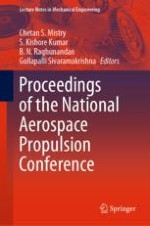2021 | OriginalPaper | Chapter
Development of Time-Efficient Multi-hole Pressure Probe Calibration Facility
Authors : Ajey Singh, Akchhay Kumar, Gaurav Tayal, Chetan Mistry
Published in: Proceedings of the National Aerospace Propulsion Conference
Publisher: Springer Singapore
Activate our intelligent search to find suitable subject content or patents.
Select sections of text to find matching patents with Artificial Intelligence. powered by
Select sections of text to find additional relevant content using AI-assisted search. powered by
